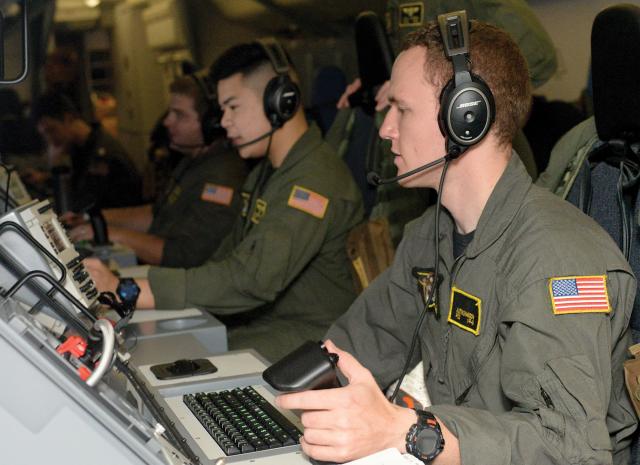By Lieutenant Commander Evan A. Karlik, U.S. Navy
The most forward-looking, eagerly awaited, and closely scrutinized acquisition document the Department of the Navy produces each year is the Report to Congress on the Annual Long-Range Plan for Construction of Naval Vessels—the 30-year shipbuilding plan. Nominally presented in conjunction with the Secretary of Defense’s annual budget submission, the plan tabulates how many naval combatants and support vessels will begin their build each year, plots the total battle force inventory over time, and estimates naval procurement and operation and sustainment (O&S) costs over the next three decades.1 On its release, reporters solicit industry leaders and members of Congress for comment, while shipyards and suppliers divine future demand from the sentences and figures contained in roughly two dozen single-spaced pages.2 The most recent rollout, in December 2020, was bolstered by a Wall Street Journal op-ed from the national security advisor and the director of the Office of Management and Budget enumerating the long-term projections: 80 fast-attack submarines, nearly 70 small surface combatants, and 11 aircraft carriers.3
Last year, the Air Force’s most celebrated and widely circulated acquisition vision looked quite different. Streaks of green characters run vertically down the cover page’s dark background, and if the reader did not immediately recognize the riff on the 1999 sci-fi film The Matrix, the introduction on the following page is headlined with a quote from Laurence Fishburne’s iconic character Morpheus. From the leading paragraph of There Is No Spoon, Dr. Will Roper, then–Assistant Secretary of the Air Force for Acquisition, Technology, and Logistics, invites readers down the proverbial rabbit hole of digital engineering, agile software, and open architecture, toward a future as “truly digital forces,” while warning that maintaining the status quo means “we lose the competition with China and Russia.”4
Roper proposes animating a “digital twin” for each weapon system, then migrating design iteration and evaluation to these virtual prototypes, much as present-day Formula 1 teams craft incredibly intricate and encompassing digital models before producing state-of-the-art, track-ready vehicles only weeks before a race. Roper also promises that by appropriately containerizing and orchestrating software components with these virtual twins, engineers and maintainers can bypass time-intensive software regression testing and completely trust that “if a container runs on your laptop, it runs on your jet, satellite, or weapon the exact same way.”

The Air Force’s Kessel Run program teams airmen with civilian coders and developers to create software quickly and efficiently, as well as to teach private sector techniques to military personnel. Credit: U.S. Air Force (J. M. Eddins Jr.)
Algorithmic Hyperwar
Roper’s treatise is highly technical and rooted in the emerging recognition that the tempo of warfare will soon outpace human decision-making. The National Security Commission on Artificial Intelligence (AI) is convinced the approaching wave of AI-enabled military technology will “increase the accuracy and speed of perceiving, understanding, deciding, and acting well beyond the capability of human cognition alone.”5 Historically, naval wargamers have looked to comparative factors such as quantity of ships and submarines, missile or gun effective range, magazine depth, and radar cross-section as predictors of a fleet’s success in combat. In this new realm of warfare, the commission explains, the victor will not be determined by those “traditional factors like force size and levels of armaments.” Instead, “battlefield advantage will shift to those with superior data, connectivity, computing power, algorithms, and system security.”
An algorithm determines the logic and structure of a machine’s approach to solving a specific problem. Computer science courses introduce students to foundational algorithms for sorting data, searching lists, and finding the shortest paths between nodes in a graphical network. Algorithms already govern the Phalanx close-in weapon system’s radar scan pattern, the Harpoon missile autopilot, and radio-frequency hopping communications. But in recent years, reinforcement machine learning and deep neural networks have allowed for creation of AI algorithms that can mature beyond their initial programming and training data and progressively improve through ongoing environmental observation.
With the accelerating computing sophistication and networked interplay of today’s weapon systems, “it is becoming very difficult for humans to comprehend what is happening fast enough,” explains Australian strategist Peter Layton. “Machines are increasingly being tasked with responding automatically to high-speed threats in the fields of missile defense, cyberattacks, and electronic warfare,” he observes, and “the decisive factor seems likely to be who possesses the better software and, in particular, the best algorithms.”6
In 2017, retired Marine Corps General John Allen and accomplished AI entrepreneur Amir Husain painted a vignette of algorithm-driven “hyperwar,” in which human commanders can offer only “broad, high-level inputs while machines do the planning, executing, and adapting” to the violent circumstances at hand. “The speed of battle at the tactical end of the warfare spectrum will accelerate enormously,” they foretold, “collapsing the decision-action cycle to fractions of a second.”7
“We are going to be shocked by the speed, the chaos, the bloodiness, and the friction of a future fight in which this will be playing out, maybe in microseconds at times,” warned Lieutenant General Jack Shanahan when serving as director of the Joint Artificial Intelligence Center. “It has to be algorithm against algorithm,” he concluded, because “if we’re trying to do this by humans against machines, and the other side has the machines and the algorithms and we don’t, we’re at an unacceptably high risk of losing that conflict.”8

The iLoc Development Team at Naval Air Station Jacksonville, Florida—comprising a handful of enterprising P-8 aviators—created more than 20 antisubmarine warfare tools for their aircraft. Credit: U.S. Navy
Updatability at the Tactical Edge
The Navy’s platform-centric culture, which obstructs the necessary shift toward algorithms and data, seems as old as the Navy itself. A popular historical account of the Navy’s first years is titled Six Frigates.9 The 41 original ballistic-missile submarines launched in the 1960s were bestowed with the moniker “41 for Freedom.”10 President Donald Trump articulated the need for 350 ships during his 2016 campaign; later that year, the Navy’s Force Structure Assessment produced a requirement for 355 ships of various types and numbers (which was later codified as U.S. policy in the Fiscal Year 2018 National Defense Authorization Act).11 Other services have observed the Navy’s success with distilling its requirements into a familiar numerical refrain and have become eager imitators: In 2018, the Air Force announced its self-assessed need for 386 operational squadrons.12
Over the next several decades, however, our habit of counting metal shapes in the water—as exquisitely constructed and as expertly crewed as they may be—must submit itself to a new cultural emphasis on software updatability. Billion-dollar warships provide critical forward presence, help enforce international norms, deter adversaries, and host potent warfighting capabilities; they are not steaming toward obsolescence anytime soon. But the persistent, animated conversation about ship types and totals is starving oxygen from the urgent need to adapt for algorithmic conflict. Just as an iPhone can conveniently download an operating system upgrade to address a recently discovered security vulnerability, augment its camera functionality, and load additional emojis for use in text messages, naval vessels will need time-critical updates to better defend against an adversary’s automated cyber attacks, adjust sensors and targeting for novel threats, and preserve a secure connection with the Navy Tactical Grid.
“How long can code remain relevant against an AI-enabled adversary, anyway?” asks Dr. Roper, urging us toward a not-far-off future in which “we push code directly, and frequently, from developers to users at paces modern warfare will almost certainly demand.” The coin of the realm will be updatability at the tactical edge, and whoever enjoys more secure and streamlined software development and delivery feedback loops will dominate. If Captain Wayne Hughes’ overarching maxim of naval tactics is to attack effectively first, the first corollary must now be “update effectively, faster.”13

What looks to any human eye to be a stuffed sea turtle was classified as a rifle by Google's AI software, thanks to subtle changes deliberately added by MIT researchers. Credit: MIT LABSIX
UpdateMe.txt
Updates will be needed from units at the contact layer to share machine-learned lessons and insights with the joint force further afield. Suppose the People’s Liberation Army (PLA) attempts to jam a Constellation-class frigate’s radar in the Taiwan Strait, but cognitive algorithms paired to the ship’s AN/SPY-6 radar system mitigate the interference with adaptive waveforms and generate imitation reflections to confound the PLA’s surface-search tracking of the vessel.14 The frigate will need to promulgate its algorithmic after-action report and augmented threat library to other U.S. combatants in the western Pacific, educating the force faster than the PLA can counter. This is the ultimate realization of the “agility and flexibility” demanded in Chief of Naval Operations Admiral Michael Gilday’s warfighting vision for maintaining maritime superiority.15
Second, updates could improve interfaces for human-machine teaming, leveraging the machine’s ability to process volumes of information at superior velocity, married with a human’s adeptness for intuition and creativity. “At the end of the day, it’s about combination,” quips former chess world champion Garry Kasparov, who famously lost to IBM’s supercomputer Deep Blue in 1997 but has remained a keen observer of technological collaboration.16 In freeplay tournaments allowing any combination of people and computers, “human strategic guidance combined with the tactical acuity of a computer was overwhelming,” relates Kasparov.17 “I describe the human role as being shepherds,” he advised recently; merely “nudge the flock of intelligent algorithms” with introductory supervision and environmental context, and “they will do the rest.” The PLA Navy, for one, is investigating the use of decision-support AI for nuclear submarine commanders.18 Achieving optimal symbiosis will require iterative revision of those algorithms that manage human-machine communication and cooperation; adjustments also will be needed to interface new AI-derived applications with legacy shipboard systems.19 In the view of former Deputy Secretary of Defense Robert Work, the stakes are enormous. “The nation that first masters human-machine collaboration and teaming across the levels of war will have a multidecade advantage in battle,” he predicts.20
With machine learning, it can be unclear what associations and rulesets AI generates, and minor contextual changes can spell problems. Outputs can surprise human overseers, and explaining those confusing solutions may prove elusive. For instance, MIT researchers demonstrated that by using subtle patterns on a 3D-printed turtle and baseball, they could trick Google’s computer vision AI into classifying the objects as a rifle and as an espresso, respectively.21 In other adversarial machine learning research, specially colored eyeglass frames fooled a facial recognition neural network into misidentifying people as the celebrities Milla Jovovich and Carson Daly, and a handful of small pieces of black and white tape carefully placed on a stop sign caused a traffic sign classifier to misinterpret the sign as a speed limit.22 AI is often brittle—showcasing dazzling strength in one dimension, with a liability to shatter when deployed in off-nominal or vague situations—and the Navy’s algorithms will require prompt correction for those emergent errors and unexpected behaviors revealed over time at sea.
Laying the Keel for an Updatable Navy
Thankfully, on board the USS Essex (LHD-2) and Stockdale (DDG-106) during spring 2018, the Naval Information Warfare Center Pacific previewed a new initiative to rapidly deploy software to afloat units. The effort, “Compile to Combat in 24 Hours” (C2C24), seeks to unshackle ships from the traditional 18-month software upgrade cadence and monolithic legacy architectures. C2C24 standardizes data formats, synchronizes ashore and afloat clouds, and employs modular micro-applications similar to smartphone apps.23 From a cybersecurity standpoint, C2C24’s streamlining shrinks the attack surface, offering “the ability to detect, react, and respond to adversary activity in a predictive manner” at speeds not previously possible, according to former Rear Admiral Danelle Barrett.24
In addition to maintaining C2C24’s momentum, the Navy also needs to accelerate the establishment of software factories. Civilian developers and code-savvy active-duty sailors would sit shoulder-to-shoulder to build applications that address the fleet’s operational problems. Comprising only a handful of enterprising P-8 aviators, the iLoc Development Team at Naval Air Station Jacksonville, Florida, created more than 20 antisubmarine warfare tools. In College Park, Maryland, a new software factory for the Aegis combat system is scheduled to reach initial capability this year.25 These fledgling efforts are ready to be scaled, leveraging services and expertise readily available through the Navy’s Black Pearl software practice and the Department of Defense (DoD) Enterprise DevSecOps Initiative and with an understanding of the Air Force’s experiences standing up its own software factories such as Kessel Run, Kobayashi Maru, and TRON.
Whereas radio, navigation receiver, and sensor functionality and features have traditionally been locked into circuitry during manufacturing, new Navy acquisition guidance should mandate that integrated warfare systems be software-defined and ready to receive cloud-native applications. Systems will also need to comply with open architecture software standards that the Joint Requirements Oversight Council is currently developing, undergirding a future cross-domain, cross-service “internet-of-things,” the Joint All-Domain Command and Control (JADC2) framework.26 As a detailed Defense Innovation Board study of DoD software acquisition at large puts it: “Speed and cycle time are the most important metrics for managing software.” The board recommended several imperatives, including creating new pathways for digital talent and establishing authority-to-operate reciprocity among DoD entities to expedite the sharing of software and digital infrastructure.27
Look to the Horizon
Carl von Clausewitz characterized war as a Zweikampf, or two-sided duel, between hostile, sentient wills facing off amid disorder, uncertainty, and nonlinearity.28 The most recent 30-year shipbuilding plan maps vessel procurement out to 2051, but by that point, varying forms of machine-based sentience will drive the blinding pace of combat, and the force with the most hardened, resilient, cooperative, and adaptable algorithms will possess the decisive advantage. The total number and types of ships in the Navy’s fleet will matter much less than whether those ships can rapidly update their software and supporting data. It is time for the Navy to look up from counting ships and instead focus on driving down the days, hours, and even minutes required to send its latest software to sailors at the tactical edge.
No comments:
Post a Comment